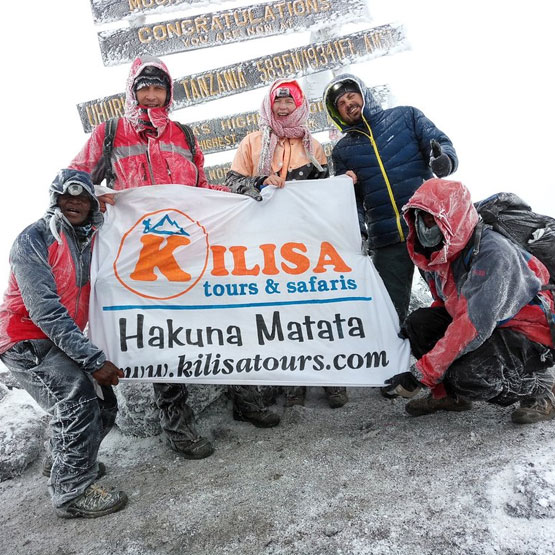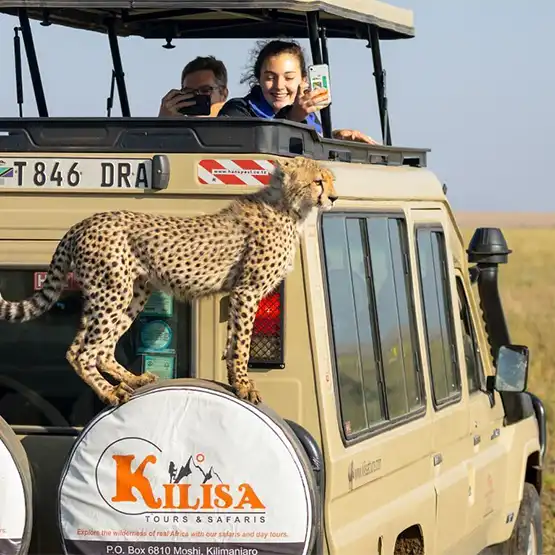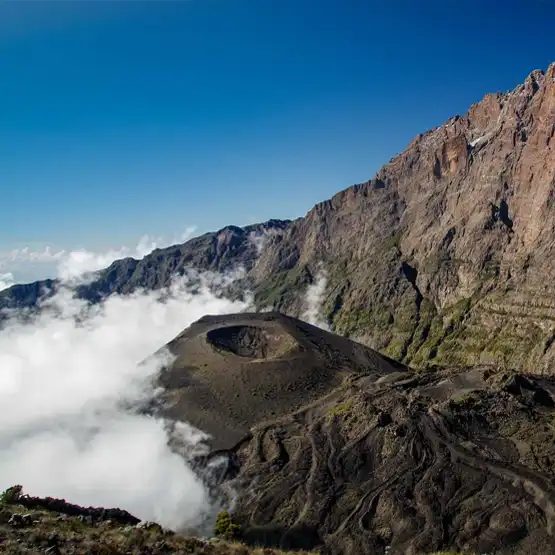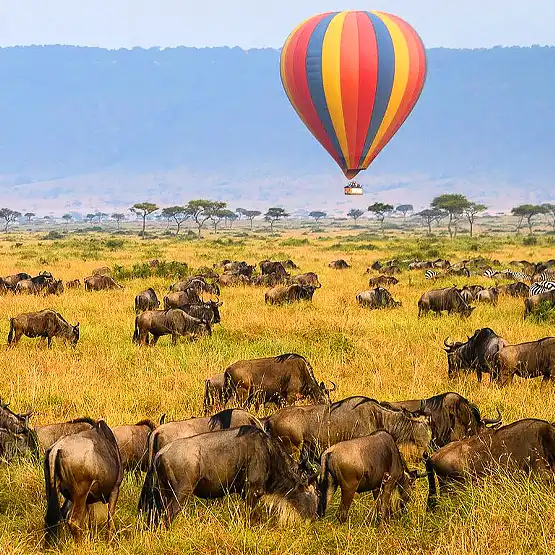Every year, thousands embark on the journey to conquer Mount Kilimanjaro, but not all are prepared for what lies ahead. It’s crucial to understand the dos and don’ts before booking a climbing tour. Making informed decisions can mean the difference between an unforgettable adventure and a risky ordeal.
Firstly, it’s vital to research and choose a reputable tour operator with experienced guides. Don’t underestimate the importance of acclimatization schedules; proper acclimatization reduces the risk of altitude sickness. Also, make sure to prepare physically and mentally for the challenge, ensuring your gear and fitness levels are adequate for the demanding climb.
Essential Dos When Booking a Kilimanjaro Climbing Tour with Kilisa Tours
When booking a Kilimanjaro climbing tour with Kilisa Tours, it’s crucial to select the right season for your climb. The best times are during the dry seasons from late June to October and from December to February. These periods offer the best weather and clearer paths. Avoid the rainy seasons as trails can be slippery and visibility poor.
Another important factor is choosing a route suitable for your experience level. Kilisa Tours offers multiple routes, each with unique challenges and scenic views. Researching these routes can help you find the one that fits your fitness level and time constraints. Consulting with Kilisa Tours’ experienced guides can offer valuable insights.
Understanding the importance of an experienced guide can’t be overstated. Kilisa Tours’ guides are trained to handle high-altitude conditions and ensure your safety. Experienced guides can also enrich the trekking experience with their knowledge of the region’s flora, fauna, and culture. They can monitor your health and provide first aid if needed.
Packing adequately for diverse weather conditions is essential. Mount Kilimanjaro’s climate varies greatly, from tropical at the base to Arctic at the summit. Ensure you have the necessary gear, including layers of clothing, waterproof jackets, and sturdy boots. Kilisa Tours provides packing lists to help you prepare.
Selecting the Right Season for Your Climb
Choosing the right season for your Kilimanjaro climb can greatly impact your experience. The best times to climb are during the dry seasons, which run from late June to October and from December to February. These months offer more stable weather conditions and clearer skies. Walking trails are less slippery, making the climb safer and more enjoyable.
During the rainy seasons, from March to May and in November, climbing can be more challenging. The trails can become muddy and more difficult to navigate. Additionally, visibility may be low due to heavy clouds and rain. These conditions can also increase the risk of altitude sickness due to rapid weather changes.
Each season offers a unique experience on Mount Kilimanjaro. The dry seasons provide stunning views and more comfortable climbing conditions. However, if you prefer fewer crowds and don’t mind a bit of rain, the shoulder seasons in early June and late October can be a good option. These times still offer a reasonable balance between weather and crowd levels.
Kilisa Tours can help you plan your climb according to the season. Their experts can provide advice on the best times to climb based on your preferences and fitness level. They offer tailored itineraries to ensure you have a memorable and safe journey. Whether you choose the dry or rainy season, proper preparation is key to a successful climb.
Choosing a Suitable Route for Your Experience Level
Choosing the right route on Kilimanjaro depends heavily on your experience level. Beginners often prefer the Marangu route, also known as the “Coca-Cola” route, due to its gradual slope and hut accommodations. More seasoned climbers might opt for the Machame route, which offers more challenging terrains and stunning landscapes. It’s known as the “Whiskey” route and requires a higher level of fitness.
For those looking for a quieter path, the Rongai route is an excellent choice. It starts from the north and is less crowded compared to others, providing a more solitary climb. Although it is slightly longer, the gradual ascent offers a good acclimatization profile. This route is suitable for those who prefer a peaceful trekking experience.
Experienced trekkers often choose the Lemosho route for its scenic beauty and lower traffic. It traverses various landscapes, including rainforests, moorlands, and alpine deserts. The longer trek allows for better acclimatization and increases the chances of reaching the summit. Kilisa Tours provides all necessary support and guidance on this route.
If you are highly experienced and looking for a rugged adventure, the Umbwe route is the way to go. It’s the steepest and most direct route to the summit, offering a thrilling climb. However, this route is recommended only for those with considerable high-altitude trekking experience. Regardless of your chosen path, always consider your physical condition and comfort level.
Understanding the Importance of an Experienced Guide
Having an experienced guide is crucial when climbing Mount Kilimanjaro. Guides like those from Kilisa Tours are well-versed in the terrain and weather patterns. They can provide valuable advice to help you stay safe and comfortable. An experienced guide also knows the best acclimatization techniques to reduce altitude sickness risks.
A knowledgeable guide can also enhance your overall experience. They share insights about Kilimanjaro’s diverse ecosystems, wildlife, and local culture. This turns your climb into an educational adventure. Additionally, guides can offer support and encouragement, which is vital during challenging moments.
Experienced guides are trained to handle emergencies. If you face health issues or any unexpected situation, they can provide first aid and make critical decisions. This reassurance allows you to focus on enjoying the climb rather than worrying about potential problems. Safety is always their top priority.
Climbing with a reputable tour company like Kilisa Tours provides extra peace of mind. They ensure their guides are certified and highly experienced. The company also offers well-planned itineraries and quality equipment. This combination makes your trekking experience more secure and enjoyable.
Better logistical management is another advantage of having an experienced guide. They handle all permits, accommodations, and meals, so you don’t have to worry about these details. Their familiarity with the mountain means they can make your journey smoother and more efficient. It allows you to fully immerse yourself in the climbing experience.
The benefits of having an experienced guide on Kilimanjaro are numerous. From safety and education to support and logistical ease, guides play a vital role. Choosing a guide from a trusted operator like Kilisa Tours ensures a successful and memorable climb. Their expertise turns a challenging trek into a rewarding adventure.
Packing Adequately for Diverse Weather Conditions
When climbing Kilimanjaro, packing the right gear for diverse weather conditions is critical. The weather can change rapidly from tropical heat to alpine cold. Ensuring you have the right clothing layers is essential. Base layers should wick moisture, mid-layers for warmth, and outer layers must be waterproof.
Proper footwear cannot be overlooked. Sturdy, waterproof hiking boots provide the necessary support and protection. They help in navigating rocky and slippery terrain. Make sure your boots are well broken-in to avoid blisters. Comfortable trekking socks that keep feet dry are also a must.
Other essential items include a good-quality sleeping bag and a reliable backpack. Your sleeping bag should be rated for low temperatures, as the nights can get very cold. A backpack with adjustable straps and lots of pockets helps distribute weight evenly. This makes carrying your belongings easier and more comfortable.
Don’t forget small but important items. Sunglasses with UV protection are crucial for snowy conditions. Sunscreen and lip balm protect against sunburn and chapped lips. Always carry a first aid kit with necessary medications. Hydration systems or water bottles are vital for staying hydrated throughout the climb.
It’s also helpful to pack some high-energy snacks. Granola bars, nuts, and dried fruits are easy to carry and provide an energy boost. These can help keep your energy levels up during long trekking days. Kilisa Tours offers a suggested packing list to help you prepare adequately.
Packing thoughtfully ensures you are prepared for any weather. It makes your climb safer and more enjoyable. By being well-prepared, you can focus on the adventure itself and the breathtaking views Kilimanjaro has to offer. This attention to detail can make a significant difference in your climbing experience.
Acclimatization Strategies to Enhance Your Summit Success
Acclimatization is crucial for a successful Kilimanjaro climb. Climbing too quickly increases the risk of altitude sickness, which can be dangerous. One effective strategy is to follow the “climb high, sleep low” principle. This means climbing to a higher altitude during the day and descending to a lower altitude to sleep.
Trekking slowly is another key strategy. This allows your body to gradually adjust to the decreasing oxygen levels. Taking breaks and maintaining a steady pace can help prevent overexertion. The slower you ascend, the better your chances of staying healthy.
Proper hydration is essential for acclimatization. Drinking plenty of water helps your body adapt to altitude changes. Kilisa Tours recommends drinking at least 3 to 4 liters of water daily. Dehydration can worsen the symptoms of altitude sickness, so keep sipping water regularly.
Eating a balanced diet also aids acclimatization. Consuming meals rich in carbohydrates can provide the energy needed for the climb. Foods like pasta, rice, and fruits are excellent choices. Avoid heavy or greasy foods that can slow you down.
Using medication can assist in preventing altitude sickness. Medicines like acetazolamide may help your body adjust more easily. However, always consult with a doctor before starting any medication. Kilisa Tours guides can provide advice on the best practices for medication use.
Monitoring your health is important during the climb. Pay attention to symptoms like headache, nausea, and dizziness. Inform your guide immediately if you experience any of these signs. Early detection and response can make a big difference in preventing serious issues.
Common Don’ts to Avoid on Your Kilimanjaro Adventure
When climbing Kilimanjaro, there are several common mistakes to avoid. One major don’t is underestimating the importance of acclimatization. Skipping acclimatization days can lead to severe altitude sickness. It’s essential to give your body time to adjust to higher altitudes.
Another mistake is not packing adequately for the trip. Forgetting essential gear like waterproof clothing or a warm sleeping bag can make your climb miserable. Be sure to follow the packing list provided by Kilisa Tours. Proper gear ensures comfort and safety throughout your trek.
Rushing the ascent is a common error among climbers. Climbing too fast increases the risk of health issues and reduces your chances of reaching the summit. Always maintain a steady, manageable pace. Listen to your guide’s advice about keeping a slow and steady rhythm.
Ignoring your body’s signals can be dangerous. Symptoms like headaches, dizziness, or nausea should not be overlooked. Informing your guide at the first sign of trouble is crucial. Early intervention can prevent serious complications.
Avoiding high-fat and greasy foods during the climb is wise. These foods can cause digestive problems at high altitudes. Stick to balanced meals rich in carbohydrates and proteins instead.
Disregarding environmental guidelines is also a no-no. Respecting nature and adhering to leave-no-trace principles helps preserve Kilimanjaro’s beauty for future generations. Dispose of waste properly and stick to designated trails.
The Significance of Travel Insurance for High Altitude Climbing
Travel insurance is a crucial part of any high-altitude climbing adventure. Kilimanjaro’s unpredictable weather and terrain can pose various risks. Having comprehensive travel insurance ensures that you’re protected in case of emergencies. This includes coverage for medical expenses, evacuations, and trip cancellations.
Medical coverage is perhaps the most important aspect. Altitude sickness and other health issues can arise unexpectedly. With travel insurance, you have access to necessary medical treatments without worrying about costs. This provides peace of mind knowing that help is available wherever you are on the mountain.
Emergency evacuation coverage is also vital. In severe cases of altitude sickness or injury, a quick evacuation might be needed. Helicopter rescues can be extremely expensive, but travel insurance covers these costs. This ensures you get to safety quickly and without financial burden.
Travel insurance also protects against trip interruptions and cancellations. Weather conditions on Kilimanjaro can sometimes force sudden changes in plans. If your climb is delayed or cancelled, insurance can reimburse you for non-refundable expenses. This saves you from financial losses due to unforeseen disruptions.
Lost or damaged gear can be a significant setback on a climb. Travel insurance often includes coverage for personal belongings. This means if your essential equipment goes missing or is damaged, you can recover the costs. Making sure your gear is covered allows you to replace it quickly and continue your adventure.
Physical and Mental Preparations: Key to Conquering Kilimanjaro
Conquering Kilimanjaro requires thorough physical preparation. Regular cardio workouts, such as running, cycling, or hiking, can boost your stamina. Strength training for your legs and core is also essential. This helps you manage the tough terrains and long climbs more effectively. It’s recommended to start training at least three months before your trip.
Mental preparedness is just as important for your Kilimanjaro adventure. Staying positive and determined can make a significant difference. Visualization techniques can help you mentally rehearse the climb. Breathing exercises and mindfulness can help manage stress during challenging moments. Preparing mentally boosts your confidence and resilience.
Climbing Kilimanjaro also requires adapting to a structured routine. Following a regular sleep schedule can help your body adjust to the time changes. Proper rest is crucial for recovery and maintaining energy levels. Incorporating stretches and yoga into your routine can enhance flexibility and prevent injuries.
Testing your gear before the climb is essential. Break in your hiking boots with several long hikes to avoid blisters. Ensure your backpack fits well and comfortably carries your gear. Familiarizing yourself with your equipment ensures everything is in working order and suits your needs.
Your diet should support your physical preparations. Eating balanced meals rich in proteins, healthy fats, and carbohydrates fuels your body for intense hikes. Staying hydrated is equally important, so drink plenty of water. Proper nutrition supports your endurance and overall health during the climb.
Why Kilisa Tours is the Go-To Choice for Your Climbing Needs
Kilisa Tours stands out as a premier choice for your Kilimanjaro climbing adventure. They offer extensive expertise with seasoned guides familiar with every route. These guides prioritize your safety and provide enriching information about the mountain. Their knowledge and experience ensure a comprehensive and secure climb.
Personalized service sets Kilisa Tours apart. They tailor each expedition to meet the specific needs and fitness levels of clients. Custom itineraries maximize your experience, whether you’re a newbie or an experienced climber. This personalized approach ensures everyone has a fulfilling adventure.
The quality of gear and equipment provided by Kilisa Tours is exceptional. They supply reliable, high-quality gear that withstands the mountain’s harsh conditions. From tents to trekking poles, they ensure you have everything needed for a successful climb. Superior equipment enhances comfort and safety throughout the trip.
Kilisa Tours also focuses on responsible tourism and environmental conservation. They operate under strict eco-friendly guidelines, emphasizing leave-no-trace principles. This commitment ensures that Mount Kilimanjaro remains pristine for future generations. Supporting Kilisa Tours means supporting sustainable tourism.
Customer satisfaction is at the heart of Kilisa Tours. Positive reviews and high client retention rates reflect their dedication. Their attention to detail and passion for excellence shine through in every expedition. Choosing Kilisa Tours means choosing a reliable, top-tier adventure experience.





